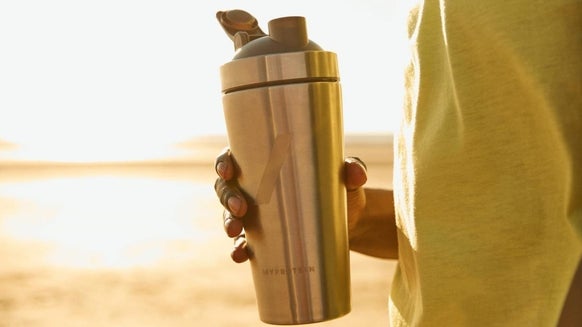A great method of of improving your ability to build dense muscle and create forceful muscle contractions is to train your mind to train the muscles. This is otherwise known as the “
Once you've read the above link (if you're not already aware of the concept,) try the following drill below to really benefit from from mind-muscle connectio. Following these steps will allow you to fine tune your nerves and feed your muscle with the correct stimulus, in order to achieve maximal gains!
Let's master the barbell curl...
Step #1: SENSORY CONCENTRATION? Take a barbell in your hands with 50-60% of your 1 repetition maximum for a biceps curl. Choose your preferred grip type and distance between hands as appropriate for your programme. Before starting the movement let the weight feel heavy in your hands, let it stretch the front of your biceps. Feel how the stretch feels from the elbow, up to the shoulder.
? Your target muscle is the biceps brachii and your target number of repetitions is 20 (this will not be strictly held to however).
? Keep your abdominals braced and upper arms in-line with your trunk, and now start performing you biceps curl. Keep your mind on how the muscle feels moving from a stretched position and when you feel the point of most resistance (at about 30° elbow flexion). Feel how it is to break through that point of resistance and move into a position of shortening). If your mind starts to deviate from the task at hand, strictly make yourself return back to the muscle and how it feels (it takes practice to remain focused for 20 repetitions).
? Load the bar with your starting weight for your work sets (for example, 75% of your 1 repetition maximum).This time form remains just as essential but you are now concentrating on the movement of your forearm in relation to your upper arm. As you flex your biceps imagine the forearm moving towards your biceps, think about the angle which is created as you go from a straightened elbow position to a fully flexed elbow.
? To facilitate this use visualisation. For example, use the image of a hydraulic gas spring or damper (which is used to control the speed and movement of a door or lid of a box). Imagine that one end is attached to your mid bicep and the other is attached in the middle of your forearm. As you flex your elbow the strut of the damper slides into the cylinder and increases pressure, as you extend the pressure releases.
? As you bend the elbow more and more the pressure increases more and you should concentrate on the flexion of the elbow and the movement of the forearm towards your bicep to sustain the pressure. Complete two working sets with this weight and using this technique.
? Start with the same weight for the next two work sets. To facilitate the pump and gain greatest benefit from an internal focus of attention you should ensure that your movement is fluid with no rest at the end of range.
? Imagine the muscle filling up with blood and pressure. Visualise the fibres stretching like a water balloon attached to a garden tap. Each flex of the biceps pumps in more blood which cannot get out.
? Immediately following dropping the weight after your working set, move into position to perform a front double biceps pose. Hold a hard isometric contraction for approximately 10 seconds, then rest for 10 seconds. Follow this with another pose to hit the biceps (e.g. side chest and bis, back double biceps or isolated biceps). Repeat for 5-8 repetitions.
? Following this you will have had 1.5-2.5 minutes of relative rest and it will be time to hit another working set. As fatigue sets in you can have the choice of either reducing the weight or reducing the number of reps. I always suggest reducing the weight in this instance (drop sets) as the more repetitions, the greater number of neural signals sent to the muscle. Work until fatigue.
Take Home Message
Follow this simple, but comprehensive drill to improve the mind-muscle connection.
You do not need to use it in every work out - however, try it for 4 weeks - followed by break and feel the benefit of the connection!








